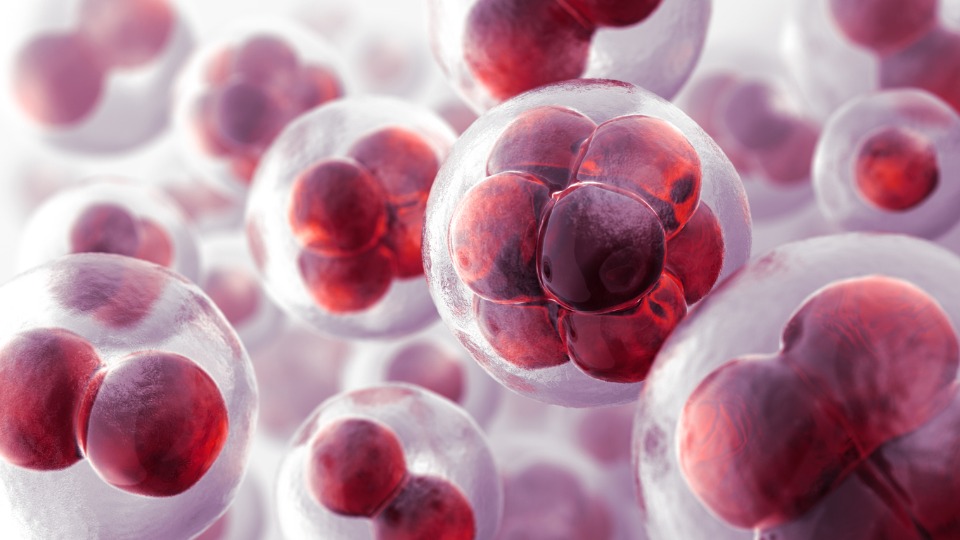
Indian scientists’ low-cost technique uses cell shape to diagnose diseases

Scientists at the Indian Institute of Science (IISc) in Bengaluru are working on a novel method to diagnose a broad range of diseases, which uses the mechanical properties of cells as compared to commonly used chemical-based lab tests.
GK Ananthasuresh from IISc-Bangalore, and his former student Sreenath Balakrishanan, who now works at the Indian Institute of Technology (IIT) Goa, developed a method to predict a cell’s biochemistry just based on the shape of its nucleus, which hosts the genetic material.
Their mechanical model, described in the Biophysical Journal, revealed the relationship among three parameters of the nucleus such as its surface area, volume, and projected area or the two-dimensional view of a cell.
According to this model, the shape of the nucleus changes as its enveloping membrane undergoes an increase in tension due to changes in a protein called actin. Using this model, they assessed alterations in the shape of liver cell nucleus caused by the hepatitis C virus (HCV) infection.
“We have decomposed the individual contributions to nuclear morphology, and used that to predict changes in levels of proteins by merely measuring the alterations in the shape of the nucleus,” Balakrishnan told PTI.
The scientists validated their findings by showing that liver cells expressing HCV proteins possessed enhanced cellular stiffness, and reduced stiffness of the nucleus. They believe that measuring and standardising changes in the mechanical properties of cells can lead to a new approach for disease diagnosis. “Our lab’s key contribution to this field is the identification that we need to employ inverse mechanics to gather more information from mechanical measurements,” Balakrishnan said.
“For example, cell stiffness can change due to many factors such as the nucleus, cytoskeleton and cell membrane. By just measuring the changes in cell stiffness can we specifically say which component has changed,” he said.
Conventionally, Balakrishnan said, diagnostic procedures detect the change in the levels of chemicals in tissues and cells that correspond to disease states. “We are working on what can be done with the mechanical response” Ananthasuresh told PTI on the side lines of an international conference held last month at IIT-Mandi, where he was a keynote speaker.
“Because whenever there’s a healthy cell that becomes abnormal in a disease condition, definitely its mechanical response changes because some constitution inside the cell has changed,” he said.
Such lab tests and chemicals assays, Balakrishnan added, involve the use of costly perishable reagents, which he believes takes the technology away from poor communities.
Additionally the chemical tests also require sufficient quantities of sample cells, depending on the sensitivity of the tests developed.
Balakrishnan said using mechanical properties instead to develop diagnostic procedures can overcome this problem, since these can be measured using the same instrument repetitively for vast quantities of sample.
“For example, if you squeeze a cell, and leave it, allowing it to recover, the time of recovery can be an indicator of the health of the cell,” explained Ananthasuresh, as an example of how physical forces and mechanical properties of cells can become diagnostic principles.
To build diagnostic devices which work on these principles, the scientists said the physical properties of cells need to be broken down to contributions from their individual components. They said this can be done by mechanical modelling of cells and their components, and finding how these are related to each other by physical forces.
Both Ananthasuresh and Balakrishanan, however, agreed that the field is very nascent, with very few people across the world working on it.
While mechanodiagnostics may not become a clinically viable method to test for all diseases, Balakrishnan said, some conditions affecting the morphology of whole cells like cancer, malaria, and sickle cell anemia may be assessed with the emerging technique.
He said these diseases are known to cause changes in the physical and biomechanical properties of cells, which result in several-fold increases or decreases in cell stiffness, and eventually cause breakdown of the bodily functions.
Balakrishnan cited the example of a study by TR Kiessling from Leipzig University in Germany who used a device to capture and stretch cells flowing through them to measure their deformability, using which his team assessed suspended breast cancer cells.
Researchers have also developed mechanodiagnostic devices which harness the differences in stiffness of normal red blood cells (RBCs) from infected ones to separate the diseased cells from healthy ones, according to Ananthasuresh, a recipient of the prestigious Shanti Swarup Bhatnagar Award in 2010.
“It took a long time for biologists to believe that the mechanical response does change in abnormal cells and can be an indicator of disease conditions. And now hardly, I can say 10-15 people across the world are working on mechanodiagnostics,” Ananthasuresh said. “But no one disagrees that disease conditions alter the mechanical properties of cells, and that itself is a huge step forward,” he added.

